The first labelling measures for washing machines (WM) came into force in 1995. Since then, the product group made big improvements in terms of energy efficiency, requiring an update of the labelling scheme in 2010. Ecodesign measures were also introduced in the same year.
he 2019 regulations revise the basis for labelling and requirements again, requiring WM and washer-dryers (WD) to have an ‘eco 40-60’ washing cycle, able to clean normally soiled cotton declared washable at 40°C or 60°C, together in the same cycle, and a washing cycle called ‘20°C’, which is able to clean lightly soiled cotton laundry, at a nominal temperature of 20°C.
Requirements for efficiency, function, duration and water-use apply to the 'eco 40-60' program.
Source: estimations from the Ecodesign Impact Accounting Overview Report 2024
Scope
The following table shows some examples of products in scope and out of scope in the Ecodesign Regulation:
| In Scope | Out of Scope |
|---|---|
|
|
Check the complete list in the Ecodesign Regulation and Energy Labelling Regulation.
Ecodesign Requirements
Rules on Ecodesign washing machines and washer-dryers are mandatory for all manufacturers and importers wishing to sell their products in the EU.
From 1 March 2021, the Regulation on Ecodesign requirements for household washing machines and washer-dryers (EU) 2019/2023 repeals and replaces Regulation (EU) 1015/2010.
This regulation better reflects users needs and also includes elements to further enhance the reparability and recyclability of appliances. For a period of 10 years, a list of spare parts, such as door hinges and seals, door locking, plastic peripherals, such as detergent dispensers, have to be available to all, while professional repairers will have access to the spare parts and information needed for the repair and professional maintenance of washing machines and washer-dryers.
Energy Label
The EU energy labels for household washing machines and washer-dryers use, as of 1 March 2021, a scale from A (most efficient) to G (least efficient). The labels provide information on the product’s
- energy efficiency class(es)
- energy consumption for 100 cycles
- water consumption for 1 cycle
- duration for 1 cycle
- noise emissions
The European Product Registry for Energy Labelling (EPREL) offers more detailed information on models placed on the EU market. This can be accessed by scanning the QR code featured on the new energy labels. The database provides additional information such as the consumption in standby mode, panel technology, whether voice recognition, automatic brightness control and a room sensor are present, or the minimum duration of guarantee offered by the supplier.
| Understanding the Washing Machine Energy Label | |
|---|---|
| Note: The energy label details are based on the ECO programme. | |
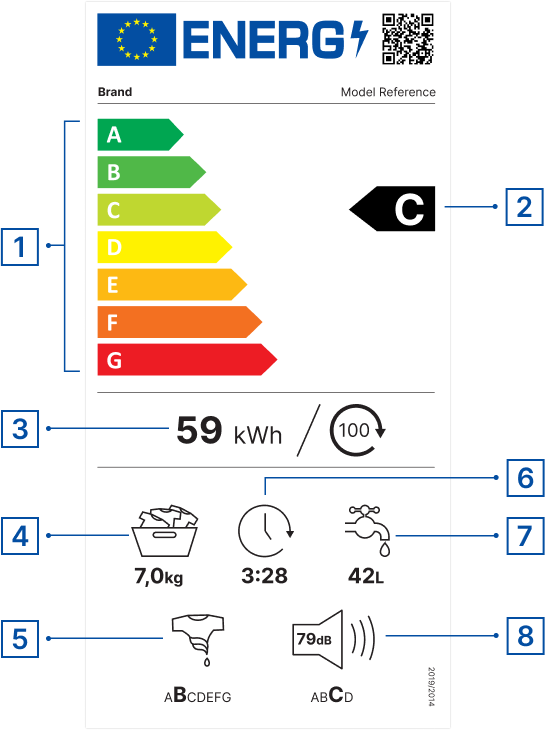 |
|
Highlights
Switching to one of the most energy efficient washing machines can save €250 over the lifetime of the product. With more efficient washing machines, Europe will also be able to save up to 1.5 TWh of electricity per year by 2020. This is equivalent to half of Malta’s annual final energy consumption and also means a saving of around 100 million cubic meters of water per year.
The new regulations will add to this saving with up to 5 TWh of electricity and 711 million cubic meters of water per year by 2030. This will in turn contribute to reducing greenhouse gas emissions by 0.84 metric tonnes of CO2 equivalent per year.
Facts & Figures
This graphic shows the estimated sales, stock, energy consumption (primary, electric or fuel), greenhouse gas emissions, consumer expenses and business revenues for years 2010 and 2030. The estimated values inside the graph bars are those from the EIA ECO-scenario, they include the effects of ecodesign and energy labelling measures.
The difference with the business as usual (BAU) scenario without these estimated measures is shown next to the graph bar. These figures indicate the estimated savings obtained due to the measures.
Product: Washing Machines and Washer Dryers Measures: Regulation (EU) 2019/2023, Regulation (EU) 2019/2014 |
|---|
| The striped lines in the charts show the 'Effect of the Regulations' |
SALES (x1000 units)  | STOCK (x1000 units) 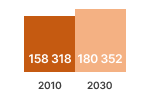 | Electricity (TWh/a) 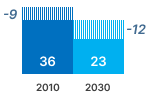 |
GHG-EMISSION  | CONSUMER EXPENSES  | REVENUES 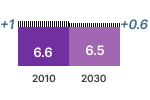 |
Source: estimations from the Ecodesign Impact Accounting Overview Report 2024
Expected Savings
ENERGY AND EFFICIENCY
In 1995, before the first measures, the average newly sold WM consumed 294 kWh/a of electricity. Without measures, this was projected to be 169 kWh/a in 2020 and 148 kWh/a in 2030. Due to the combined measures, this has been reduced to 99 kWh/a in 2020 (-70 kWh, -41%) and expected 96 kWh/a by 2030 (-52 kWh/a, -35%).
At EU level, considering also the increasing quantity of installed WMs and WDs, this enabled a reduction of total WM/WD electricity consumption from 41 to 27 TWh/a in 2020 (-34%), and from expected 36 to 23 TWh/a in 2030 (-36%).
Average Electricity Consumption of Washing Machines for Scenarios with and without Measures
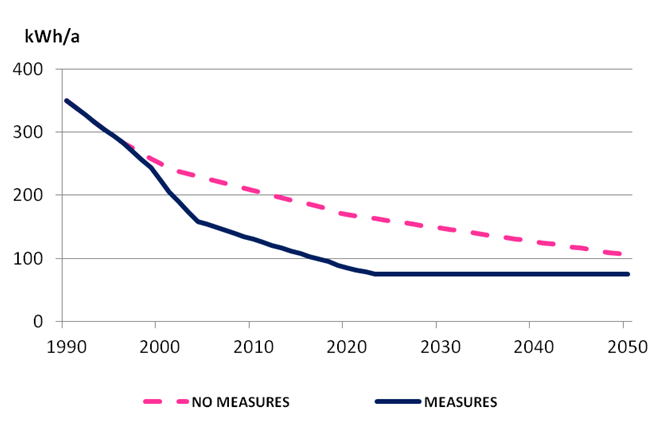
WATER
The Ecodesign regulations also set limits on the water consumption of WMs. In 1995, the average WM consumed 84 litres per cycle. Without measures this was projected to drop to 75 l/cycle in 2000. Due to the measures this can be reduced to 36 l/cycle in 2020 and an expected 30 l/cycle by 2030.
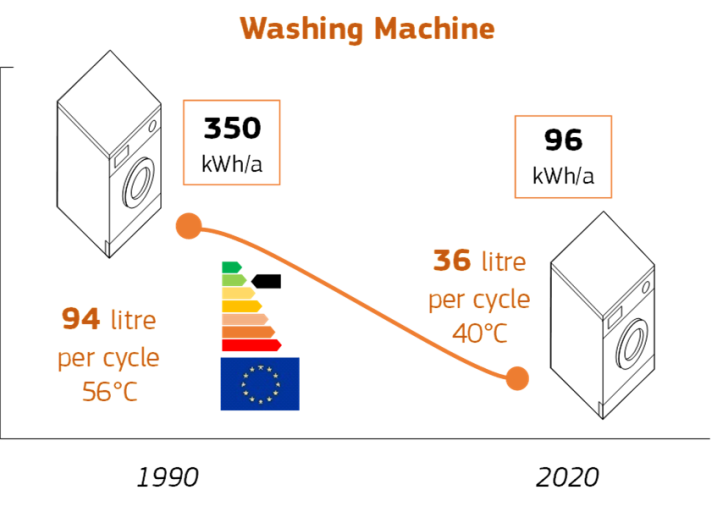
Source: estimations from the Ecodesign Impact Accounting Overview Report 2024
Using a washing machine in an energy efficient way
- Go cold! Studies show that clothes rinsed in cold water come out just as clean as those rinsed in warm water. Your water heating bill will drop considerably
- When cold water will not do the job, wash in warm, rather than hot water, and rinse in cold water
- Use a minimal amount of detergent, as residue can build up and cause mechanical failure
- Extra-dirty clothes? Instead of washing twice, use the presoak option
- Place the washer close to the water heater. Water loses heat as it flows through pipes. When the washer is located near the water heater, hot water doesn’t have to travel as far to reach the washer, and less heat is lost. Insulating the pipes between the water heater and washer helps retain heat
Source: www.savingenergy.org.za (A Guide for Energy Efficiency Labelling)

Suppliers
Suppliers shall ensure that:
(a) each household washing machine and household washer-dryer is supplied with a printed label in the format as set out in Annex III and, for a multi-drum household washing machine or a multi-drum household washer-dryer, in accordance with Annex X;
(b) the parameters of the product information sheet, as set out in Annex V, are entered into the product database;
(c) if specifically requested by the dealer of household washing machines and household washer-dryers, the product information sheet shall be made available in printed form;
(d) the content of the technical documentation, set out in Annex VI, is entered into the product database;
(e) any visual advertisement for a specific model of household washing machine or household washer-dryer contains the energy efficiency class and the range of energy efficiency classes available on the label in accordance with Annex VII and Annex VIII;
(f) any technical promotional material concerning a specific model of household washing machine or household washer-dryer, including on the Internet, which describes its specific technical parameters includes the energy efficiency class of that model and the range of energy efficiency classes available on the label, in accordance with Annex VII;
(g) an electronic label in the format and containing the information as set out in Annex III is made available to dealers for each model of household washing machine and of household washer-dryer;
(h) an electronic product information sheet, as set out in Annex V, is made available to dealers for each model of household washing machine and of household washer-dryer.

Dealers
Dealers shall ensure that:
(a) each household washing machine or household washer-dryer, at the point of sale, including at trade fairs, bears the label provided by suppliers in accordance with point 1(a) of Article 3, with the label being displayed for built-in appliances in such a way as to be clearly visible, and for all other appliances in such a way as to be clearly visible on the outside on the front or top of the household washing machine or household washer-dryer;
(b) in the case of distance selling and sale through the internet, the label and product information sheet are provided in accordance with Annexes VII and VIII;
(c) any visual advertisement for a specific model of household washing machine or household washer-dryer contains the energy efficiency class of that model and the range of energy efficiency classes available on the label, in accordance with Annex VII;
(d) any technical promotional material concerning a specific model of household washing machine or household washer-dryer, including on the Internet, which describes its specific technical parameters, includes the energy efficiency class of that model and the range of energy efficiency classes available on the label, in accordance with Annex VII.

Policy
Ongoing legislative work
Please check the ongoing initiatives on the Have your say portal.
Regulation (EU) 2019/2023 of 1 October 2019 laying down Ecodesign requirements for household washing machines and household washer-dryers pursuant to Directive 2009/125/EC of the European Parliament and of the Council, amending Commission Regulation (EC) No 1275/2008 and repealing Commission Regulation (EU) No 1015/2010 (OJ L 315, 5.12.2019, pp. 285-312)
Regulation (EU) 2019/2014 of 11 March 2019 supplementing Regulation (EU) 2017/1369 of the European Parliament and of the Council with regard to Energy Labelling of household washing machines and household washer-dryers and repealing Commission Delegated Regulation (EU) 1061/2010 and Commission Directive 96/60/EC (OJ L 315, 5.12.2019, pp. 29-67)
What is the aim of the regulations?
Household washing machines and washer dryers are subject to new and revised Ecodesign* requirements and Energy Labelling* rules. Ecodesign and Energy Labelling go hand-in-hand providing European consumers with valuable information to enable them to make an informed choice and eventually increase the market for more energy efficient products.
Regulation (EU) 2019/2023 sets out Ecodesign requirements, pursuant to Directive 2009/125/EC, for the sale or putting into service of electric mains-operated household washing machines and washer dryers. It amends Regulation (EC) No 1275/2008 and repeals Regulation (EU) No 1015/2010 as of 1 March 2021.
Delegated Regulation (EU) 2019/2014 sets out rules on the labelling of, and supply of additional product information on, the same appliances. It supplements Regulation (EU) 2017/1369 and repeals Delegated Regulation (EU) No 1061/2010 and Commission Directive 96/60/EC.
Key points
- Does not apply to household washing machines with a capacity of less than 2 kg and household washer-dryers with a capacity of 2 kg or less.
- Sets out the Ecodesign requirements in Annex II, which cover:
- programme requirements, including rules on providing an ‘eco 40-60’ programme and (for washer-dryers) a wash & dry cycle. The eco 40-60 programme must be set as the default programme where possible, or made available for direct selection without the need for any other selection such as a specific temperature or load. The indications ‘normal’, ‘daily’, ‘regular’ and ‘standard’ must not be used in programme names either alone or in combination with other information;
- wash and dry cycle;
- energy efficiency;
- functional requirements (washing efficiency and rinsing effectiveness);
- requirements on duration;
- water consumption;
- low power modes (off mode and stand-by mode);
- resource efficiency, including availability of spare parts, access to repair and maintenance information, material recovery and recycling;
- information for installers and end-users.
- Sets out the conformity assessment procedure: national authorities must apply the verification procedures laid down in Annex IV when carrying out market surveillance checks, and the measurement methods and calculations that must be followed, in Annex III.
- Sets out in Annex V indicative benchmarks based on the best-performing products and technologies available for such appliances in terms of their water and energy consumption, washing efficiency and airborne acoustical noise emissions.
- The European Commission must review the regulation in the light of technological progress and assess a number of aspects, such as requirements for reducing microplastics, 6 years after its entry into force.
Delegated Regulation (EU) 2019/2014
- This delegated act sets out the energy efficiency class, the spin-drying efficiency class and the acoustic airborne noise emission class which are based on an index in Annex II.
From when do the regulations apply?
They both apply from 1 March 2021.
Background
Directive 2009/125/EC establishes a framework to set Ecodesign requirements for energy-related products. It tasks the Commission to set these for products which are widely sold and traded in the EU and have a significant environmental impact.
Regulation (EU) 2017/1369 establishes a framework to set Energy Labelling requirements for energy-related products to enable consumers to choose more efficient products to reduce their energy consumption.
The WEEE Directive set requirements on e.g. recovery and recycling of waste electrical and electronic equipment (WEEE) to reduce the negative environmental effects resulting from the generation and management of WEEE and from resource use.
For more information, see:
- Washing machines (European Commission)
- The new Ecodesign measures explained (European Commission)
- New energy efficiency labels explained (European Commission)
- About the energy label and Ecodesign (European Commission).
Disclaimer: please pay attention to possible updates/changes as indicated in the Official Journal (green dot)
Useful Links
Regulation (EU) 2017/1369 of the European Parliament and of the Council of 4 July 2017 setting a Framework for Energy Labelling and repealing Directive 2010/30/EU (OJ L 198, 28.7.2017, pp. 1-23)
Directive 2009/125/EC of the European Parliament and of the Council of 21 October 2009 establishing a Framework for the setting of Ecodesign requirements for energy-related products (OJ L 285, 31.10.2009, pp. 10-35)
Commission Implementing Decision (EU) 2021/936 of 3 June 2021 on the harmonised standards for household washing machines and household washer-dryers drafted in support of Regulation (EU) 2019/2023 and Delegated Regulation (EU) 2019/2014
Regulation (EU) 2021/340 amending Regulations (EU) 2019/2013 to 2018
Regulation (EU) 2021/341 amending Regulations (EU) 2019/424, 1781 and 2020 to 2024

